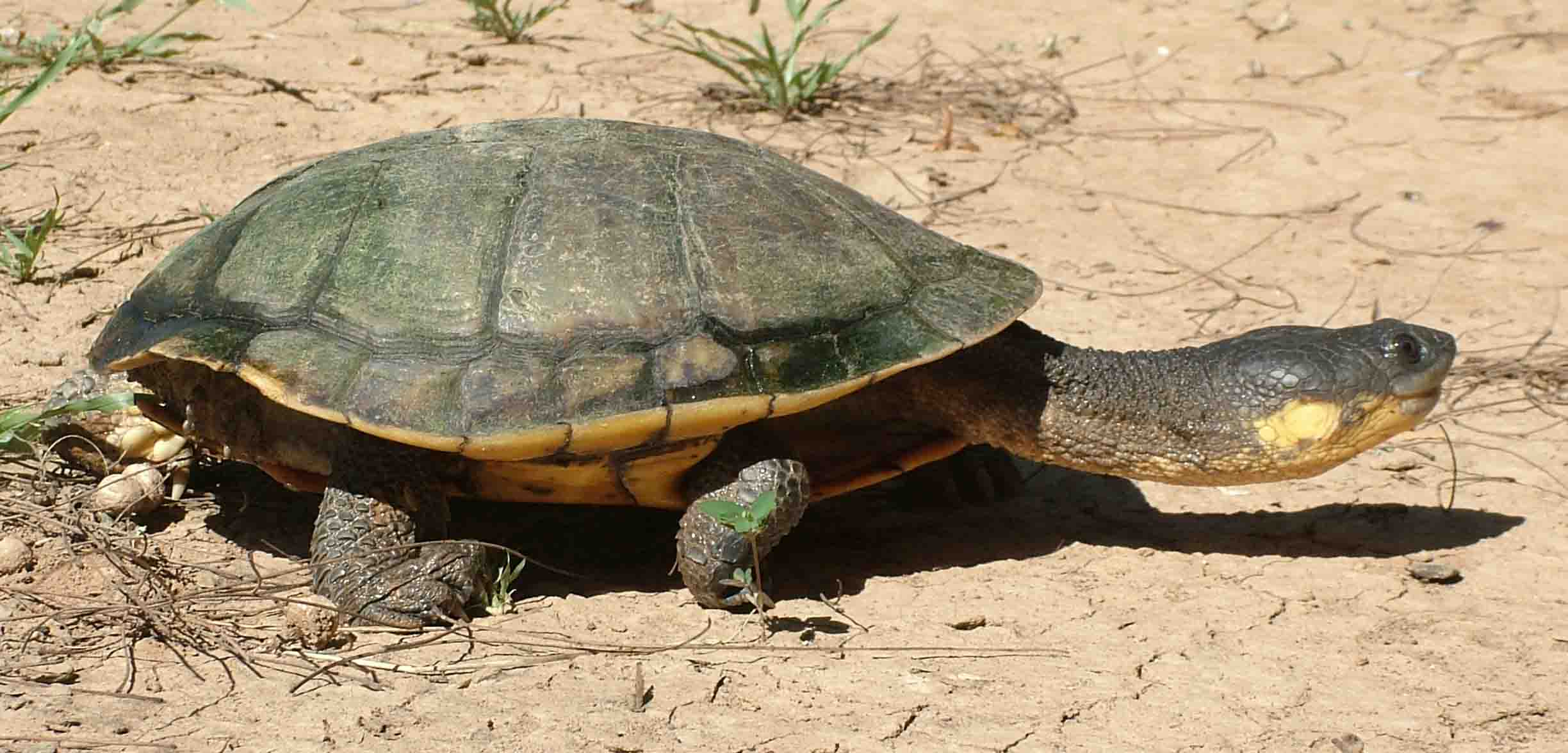Acanthochelys macrocephala, 040
Acanthochelys macrocephala (Rhodin, Mittermeier, and McMorris 1984) –
Big-Headed Pantanal Swamp Turtle, Pantanal Swamp Turtle
Anders G.J. Rhodin1, Sébastien Métrailler2, Thomas Vinke3, Sabine Vinke3,
Harald Artner4, and Russell A. Mittermeier5
1Chelonian Research Foundation,
168 Goodrich St., Lunenburg, Massachusetts 01462 USA [[email protected]];
2Chemin du Bosquet 6, CH-1967 Bramois, Switzerland [[email protected]];
3Filadelfia 853, 9300 Fernheim, Paraguay [[email protected]];
4Maria Ponsee 32, 3454 Reidling, Austria [[email protected]];
5Conservation International, 2011 Crystal Drive, Suite 500,
Arlington, Virginia 22202 USA [[email protected]]
Summary. – The big-headed Pantanal swamp turtle, Acanthochelys macrocephala (Family Chelidae), is a medium-sized aquatic turtle (carapace length to 295 mm), endemic to the Pantanal and Chaco ecoregions of Brazil, Bolivia, and northern Paraguay. It has a limited distribution in the upper Río Paraguai drainage and is apparently restricted to the swampy lowlands of the Pantanal and the arid plains of the northern Chaco. The species inhabits marshes, wetland areas, shallow bays and brackish lagoons (salinas), as well as opportunistically utilizing ephemeral waterbodies, including roadside drainage ditches and farm irrigation reservoirs and artificial ponds in pasturelands (tajamares). Population levels appear relatively robust at present and the species is not uncommon, but ongoing patterns of habitat loss in the Chaco, combined with climate change leading to increased aridity and threat to ephemeral water resources potentially threaten the species, and it is currently categorized as Near Threatened on the IUCN Red List.
Distribution. – Brazil, Bolivia, Paraguay. Distributed in the upper Río Paraguai drainage, in the Pantanal ecoregion encompassing parts of Mato Grosso and Mato Grosso do Sul in Brazil, eastern Bolivia, and northern Paraguay, and in the Chaco ecoregion of southern Bolivia and northern and central Paraguay.
Synonymy. – Platemys macrocephala Rhodin, Mittermeier, and McMorris 1984, Acanthochelys macrocephala, Phrynops chacoensis Fritz and Pauler 1992, Acanthochelys chacoensis, Mesoclemmys chacoensis.
Subspecies. – None currently recognized.
Status. – IUCN 2009 Red List: Near Threatened (LR/nt) (assessed 1996, needs updating); CITES: Not Listed.
Citation:
Rhodin, A.G.J., Métrailler, S., Vinke, T., Vinke, S., Artner, H., and Mittermeier, R.A. 2009. Acanthochelys macrocephala (Rhodin, Mittermeier, and McMorris 1984) – big-headed Pantanal swamp turtle, Pantanal swamp turtle. In: Rhodin, A.G.J., Pritchard, P.C.H., van Dijk, P.P., Saumure, R.A., Buhlmann, K.A., Iverson, J.B., and Mittermeier, R.A. (Eds.). Conservation Biology of Freshwater Turtles and Tortoises: A Compilation Project of the IUCN/SSC Tortoise and Freshwater Turtle Specialist Group. Chelonian Research Monographs No. 5, pp. 040.1–040.8, doi:10.3854/crm.5.040.macrocephala.v1.2009, //iucn-tftsg.org/cbftt/.
(Adobe Acrobat 6.0 or later required)

Acanthochelys macrocephala, adult female from nr. Filadelfia, Chaco, Paraguay.
Photo by Thomas and Sabine Vinke.
Distribution:

Distribution of Acanthochelys macrocephala in Brazil, Bolivia, and Paraguay in South America. Red points = museum and literature occurrence records based on Iverson (1992) plus more recent and authors’ data; green shading = projected distribution based on GIS-defined hydrologic unit compartments (HUCs) constructed around verified localities and then adding HUCs that connect known point localities in the same watershed or physiographic region, and similar habitats and elevations as verified HUCs (Buhlmann et al., in press), and adjusted based on authors’ data. Red square = trade specimen from the Río Mamoré probably not representing natural distribution; red point at eastern edge of distribution = skeletal specimen from Coxim probably from just outside the natural range.








